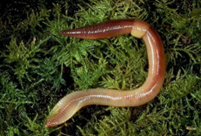DISTRIBUTION PATTERNS AND ECOLOGICAL SERVICES OF EARTHWORMS: A REVIEW
Main Article Content
Abstract
The soil macroinvertebrates are extremely diverse taxa at the global level and play the main role of Biota land to maintain dynamic balance and adjust the fertility of the soil. Soil health and soil biodiversity are interdependent and earthworms proved to be positive to produce plants, soil structure, and land health. This review assessment aims to analyze the diversity, distribution patterns, and ecological services of earthworms to predict ecosystem robustness as well as the extent and progression of stress and clear straight. The scope of this review focuses on the nation’s territorial areas in the tropical regions of Africa. The recent works were analyzed from journals, case reports & books and presented in a clearer way. Loss of biodiversity in these macrofaunas can cause ecological system dysfunction and affects the survival of earthworms. In conclusion, an abundance of earthworms in the present assessment demonstrates that altered diversity indices as a result of traditional farming systems directly affect earthworm abundance. Finally, it is helpful to determine the optimal scale of action to protect the soil from harmful effects. The application of organic residues is considered good for improving the habitat of land animals, and repairing plowed and degraded farmland.
